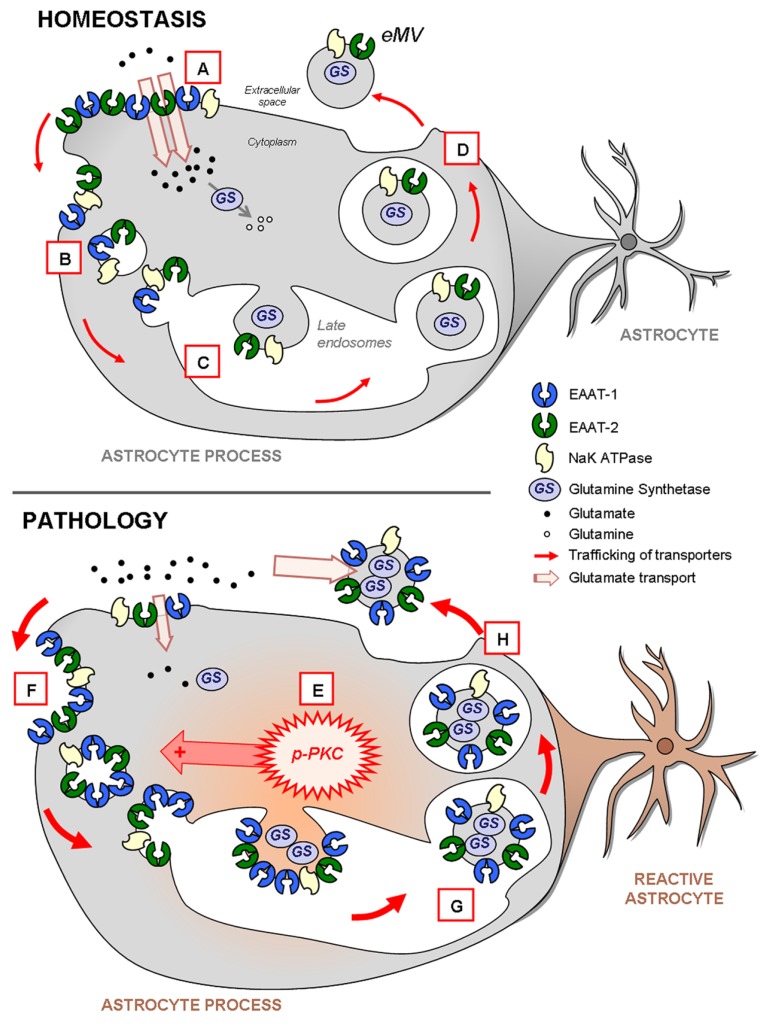FIGURE 10.
Schema highlighting the trafficking of glutamate transporters in resting or reactive astrocytes. In homeostatic conditions (upper panel), both EAAT-1 and -2 are enriched at the plasma membrane providing an efficient glutamate reuptake (A; see Figures 2 and 7) as well as in intracellular early (B) or late (C) endosomal pools (Figure 2). Furthermore, EAAT are also constitutively targeted to eMV (D; see Figure 3) together with glutamine synthetase and NaK ATPase, especially EAAT-2 in vivo (see Figure 9). During astrocytic reaction associated with pathological conditions (lower panel; see Figure 6) the activation of PKC (E; see Figure 2) and in particular PKC-δ (see Figures 3, 5, and 6) drives the internalization of EAAT to the endosomal compartment (F; see Figures 2 and 7). The result is an apparent loss of astrocytic reuptake capacity (see Figure 2). This PKC-driven EAAT internalization ultimately leads to increased transporter packing (G) and secretion in eMV (H) together with glutamine synthetase and NaK ATPase (Figures 3 and 9). However, no overall increase of eMV release is generated (Figures 3, 4, and 9). The ability of eMV to reuptake glutamate (see Figure 3) together with the concomitant presence of glutamine synthetase and NaK ATPase (see Figure 9) might bestow an increased extracellular capacity to convert glutamate to glutamine.

